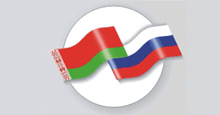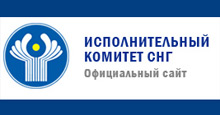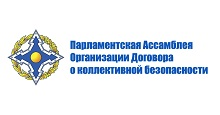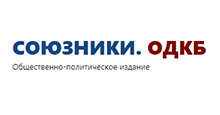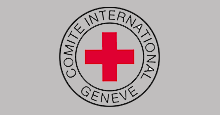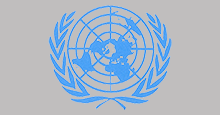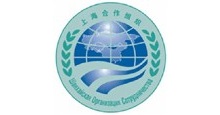On April 22, during a meeting between the CSTO Secretary General Imangali Tasmagambetov and the MSLU Rector Irina Kraeva, the CSTO Secretariat and the Moscow State Linguistic University signed a memorandum of cooperation. The document provides for the implementation of educational and scientific projects.
From 21 to 25 April this year, the CSTO Secretariat is holding an annual training course for representatives of the CSTO member states without military status.
The meeting was held in the city of Moscow at the CSTO Joint Staff under the chairmanship of Viktor Zinoviev, Secretary of the CSTO Interstate Commission on Military-Economic Cooperation (ICMEC, Commission).
From April 7 to 10, 2025 on the basis of the Park-Hotel “Ognikovo” of Istrinsky district of Moscow region, the XXII International seminar-meeting on complex martial arts with the heads of combat and physical training of power ministries and departments of the CSTO member states took place.
The contribution of the Belarusian people to the achievement of the Great Victory is invaluable
17.04.2020The Victory Day is one of the most honored holidays in the Republic of Belarus. The Belarusian people protect their history, and the most earthshattering pages of more than a thousand-year-old history of the people of the Republic of Belarus are connected precisely with the 20th century.
The memories of the Great Patriotic War are undeniable and solemn for us. Yes, our history has begun more than a thousand years ago. But it could have ended in the 40s of the last century, unless the heroism of our Soviet people
- Head of State A.G. Lukashenko noted on the eve of the 75th anniversary of the liberation of the Republic of Belarus from Nazi invaders.
Over 1 million 300 thousand Belarusians have fought on the fronts of the World War II, 374 thousand partisans and over 70 thousand underground fighters fought in the territory occupied by the enemy. A total of 213 partisan brigades operated, which included about 1,000 units and 258 units acted independently. Hidden partisan reserves amounted to about 400 thousand local residents. The nationwide resistance movement unfolding in the Republic of Belarus, in scale and scope, has no analogues in world history.
The scale of the nationwide war against Nazi invaders is evidenced by the fact that partisans and underground fighters destroyed about half a million invaders and their accomplices on the territory of the Republic of Belarus, derailed 11,128 echelons and 34 armored trains, defeated 948 enemy staffs and garrisons, destroyed 1,355 tanks and armored vehicles.
Deep behind enemy lines Belarusian partisans had published more 170 newspaper titles and hundreds of pamphlets.
Even on August 6, 1941, the leaders of the “Red October” partisan unit of the Polesie region, T. P. Bumazhkov and F. I. Pavlovsky, were the first of the Soviet partisans to be awarded the titles of Heroes of the Soviet Union. The names of such heroes of partisans and underground fighters as A.S. Azonchik, K.S. Zaslonov, E.S. Zenkova, I.K. Kabushkin, V.Z.Korzh, E.G. Mazanik, K .P. Orlovsky, Z.M. Portnova, V.Z.Kharuzhaya, M.F. Shmyryov, etc.
By the end of 1943, 60% of the republic’s territory was under the partisan control (in total, 20 partisan zones existed in the Republic of Belarus during the years of Hitler’s occupation).
By its scale, military and political results, the resistance movement in the BSSR acquired strategic importance, turned into one of the major factors in defeating the enemy. The Republic of Belarus is still called the “partisan republic”.
After the liberation of the Republic of Belarus, over 180 thousand partisans joined the ranks of the Red Army. For the heroism and courage shown in the fight against Nazi invaders behind enemy lines, about 140 thousand Belarusian partisans and underground fighters were awarded orders and medals of the USSR, 91 of them were awarded the title of Hero of the Soviet Union.
Representatives of more than 70 nations and nationalities waged a heroic war in the ranks of Belarusian partisans and underground fighters. In the partisan formations, Russians, Armenians, Uzbeks, Tajiks, Kyrgyz, Kazakhs and representatives of other nationalities of the USSR fought along with Belarusians.
Belarusians played an important role in approaching a common victory over the enemy - workers of the deep rear evacuated to the east.
In July – August, 1941, more than 1 million people, equipment of 129 large enterprises, 36 machine and tractor stations were evacuated deep into the territory of the USSR, in the Volga region, to the Urals, to Siberia and Central Asia. By the summer of 1942, more than 60 Belarusian enterprises were working for the needs of the front.
For heroic acts in the Great Patriotic War, the title of Hero of the Soviet Union was awarded to 449 Belarusians and natives of the Republic of Belarus, 73 became full cavaliers of the Order of Glory, 4 Belarusians became twice Heroes of the Soviet Union (P.Ya. Golovachev, I.I. Gusakovsky, S.F. Shutov, I.I. Yakubovsky).
A significant contribution to the Great Victory was made by the military leaders - natives of the Republic of Belarus. This is, first of all, Army General A.I. Antonov, chief of the General Staff of the Red Army since February 1945. The Belarusian strategic offensive operation “Bagration” was developed under his leadership in 1944. This operation has rightfully became the pinnacle of the art of war.
In total, over 400 generals and admirals from among the natives of the Republic of Belarus fought in the ranks of the Red Army and the Russian Navy. Many of them in the post-war period became prominent military leaders, including V.D.Sokolovsky, I.I. Yakubovsky, I.I. Gusakovsky, E.F. Ivanovsky, V.A. Penkovsky, P.I. Ivashutin, V. .F.Margelov, I.E. Shavrov, S.A. Krasovsky, I.I. Pstygo and others.
The Republic of Belarus paid an ultimate price for the Great Victory - the country's population fell by three million. As a result of the genocide policy, the Nazi invaders destroyed hundreds of thousands of civilians: Belarusians, Jews, Russians, Ukrainians, etc.
During the years of occupation, the BSSR lost more than half of its national wealth. Total material losses amounted to 79 billion rubles at 1940 prices. The Invaders burned and destroyed 209 cities and regional centers, more than 9 thousand villages, 10 338 industrial enterprises, destroyed or took out to Germany about 90% of machines, machine-tools and equipment. 8,825 schools, 2,187 hospitals and outpatient clinics were completely or partially destroyed.
About 380 thousand civilians were taken out to forced labor in Germany. During the years of occupation, which lasted 1 101 days, more than 200 death camps functioned in the Republic of Belarus, including 14 children ones. Only in Minsk and its environs there were nine death camps of people, more than 400 thousand Soviet citizens and prisoners of war lost their lives there.
During the war years, among the 6 million European Jews - victims of the Holocaust - more than 700 thousand people from the Republic of Belarus were killed. Many of them died in the Minsk ghetto. Residents of the Republic of Belarus were risking their lives and harbored Jews, saving them from imminent death. More than 700 of them were awarded the title “Righteous Among the Nations”.
Be worthy of the feat of the generation of the Great Victory
In order to preserve the memories of the great feat of the Soviet people in the Republic of Belarus, a complex of diverse events is being implemented: republican patriotic projects “The Republic of Belarus remembers”, “Flowers of the Great Victory”, heroic-patriotic action “The Great Victory is 75!”, Republican rally of search units ”We are heirs of the Great Victory “, civil-patriotic project“ Unite the Republic of Belarus in Your Heart ”and dozens of other patriotic actions.
Annual military parade is an integral part of the solemn celebration of the Great Victory.
Since 2019, the Republic of Belarus has been carrying out a large-scale project “For the Glory of the Common Victory!”. The main goal of this project is to pay tribute to the memory of the war veterans who have made an invaluable contribution to the common Victory. In March 2020, a capsule with soil collected on the battlefields near Rzhev was handed over to the eternal storage of the crypt of the Minsk Temple Monument in honor of All Saints and the innocently killed. On the eve of the memorial capsule with the inscription "From the places of the Battle of Rzhev", made in the form of an artillery shell, was exhibited in the temple for all to see.
The laying of the first four memorial capsules in the crypt took place on May 9, 2019 (in them - land taken from the mass grave of the partisans of the “Breakthrough” memorial complex in the Ushachsky district, the “Bogoroditsky field” near Vyazma, the graves of the medical instructor of the Hero of the Soviet Union Zinaida Tusnolobova- Marchenko and pilot Alexander Mamkin).
The Republican patriotic project “The Republic of Belarus remembers” is dedicated to the idea of preserving the memories of the people's feat. The project accumulates numerous initiatives throughout the country - open dialogs, online contests, challenges, thematic photo projects, events of the charity action of the same name, processions with portraits of heroes.
In May-July 2019, the Ministry of Foreign Affairs of the Republic of Belarus, together with Belarusian overseas agencies, launched an information campaign on social networks, dedicated to the 75th anniversary of the liberation of the Republic of Belarus from Nazi invaders. Everyone was invited to join the action and tell the stories of their relatives who contributed to the liberation of the Motherland and the victory over Nazism, under a single hashtag # BY75. The direct participants in the action were not only employees and management of the Belarusian Foreign Ministry, Belarusian diplomatic missions, but also representatives of the “Wargaming” company, the Belarusian State Museum of the Great Patriotic War, a number of higher educational institutions of the Republic of Belarus, as well as students from several Minsk and regional schools.
Since 2015, upon the initiative of the Belarusian Republican Youth Union, the country also implements the patriotic project “Flowers of the Great Victory”, uniting hundreds of thousands of people of different professions and ages. Within the framework of the project, actions are being taken across the country to lay apple orchards, to improve military graves, monuments and obelisks. The single symbol of the project “Flowers of the Great Victory” is a composition consisting of apple blossoms and a red-green ribbon. [GK15]
The apple blossoms embody sincere gratitude to the warrior heroes who gave their children and grandchildren the Great Victory, the opportunity to enjoy the blooming gardens and new peaceful victories of the sovereign Republic of Belarus. The color of the elements of the National Flag of the Republic of Belarus emphasizes the historical significance of these popular holidays in modern Belarusian society.
This boutonniere and its logo are widely used during various festive events (processions, rallies, meetings with veterans, historical reconstructions, exhibitions, concerts, interactive venues, installations, photo zones, etc.).
Information about relatives and fellow countrymen, members of the partisan movement and the underground struggle is now available on the information portal "Partisans of the Republic of Belarus". The project database already contains tens of thousands of personal electronic cards with information about partisans and underground workers.
In order to perpetuate and preserve the memories of the generation of winners, on March 13, 2020, the National Academy of Sciences of the Republic of Belarus initiated the all-Belarusian action “People’s Chronicle of the Great Patriotic War: remember all!” The action provides for the collection of preserved memories and photographs of participants in the struggle against Nazi aggressors during the Great Patriotic War. The collected materials are accumulated at the Institute of History of the National Academy of Sciences of the Republic of Belarus, where they are scientifically processed, relevant publications are prepared, and work is underway to create an electronic database.
In 2020, the implementation of the activities of the national civil-patriotic project “Unite the Republic of Belarus in Your Heart” was continued, within the framework of which Belarusian youth explores the historical and cultural objects of their locality, develops tourist and excursion routes, creates brochures, prospectuses, catalogs, videos, information stands "My little homeland" with the information about the monuments of military history.
To consolidate the efforts of public associations in the patriotic education of the youth of the Belarusian Republican Youth Union and the Federation of Trade Unions of the Republic of Belarus, together with the Belarusian State Museum of the History of the Great Patriotic War, with the support of the Belarusian Railway and other organizations, the Youth Marathon "75" was held.
In higher education institutions, together with the Belarusian Republican Youth Union, an action “Student teams named after their names!” was held. in this action student teams were given the names of Heroes of the Soviet Union, full holders of the Order of Glory, veterans and participants in the World War II.
The Republic of Belarus honors the memories of the heroic past. In January, 2020, Belarusian State Pedagogical University named after M. Tanka conducted the 55th international “Star race” dedicated to the 75th anniversary of the Victory in the Great Patriotic War.
Research work is being carried out in educational institutions to establish and perpetuate the memories of the dead defenders of the Fatherland and the victims of the war, to conduct reconnaissance search expeditions, "Memory Watch."
Within the scope of establishing the names, destinies and burial places of soldiers who died during the Great Patriotic War, Belarusian youth works with the archives of institutions of the Republic of Belarus, near and far abroad. The work with the information presented on the “Memorial” website is organized.
Currently, students of Belarusian educational institutions have already created more than 140 interactive maps on the territory of village councils, districts and regions, which provide a description of more than 3,500 monuments of military history.
The collected information replenishes the funds of museums of educational institutions, which play a special role in the education of the younger generation. They are a kind of chronicle of the history of the region.
As of September 1, 2019, 1,477 museums were created in Belarusian educational institutions, of which 226 are of military-historical profile. Almost all museums of educational institutions have expositions reflecting the events of the Great Patriotic War.
Thanks to the Great Victory, the Republic of Belarus today is a sovereign independent country where the peace and stability are reliably ensured. By the will of the Belarusian people, the Independence Day of the Republic of Belarus (Republic’s Day) is a sacred date for the Belarusian people - the day of liberation of Minsk from Nazi invaders – the 3rd of July.
Ministry of Foreign Affairs in Facebook:

